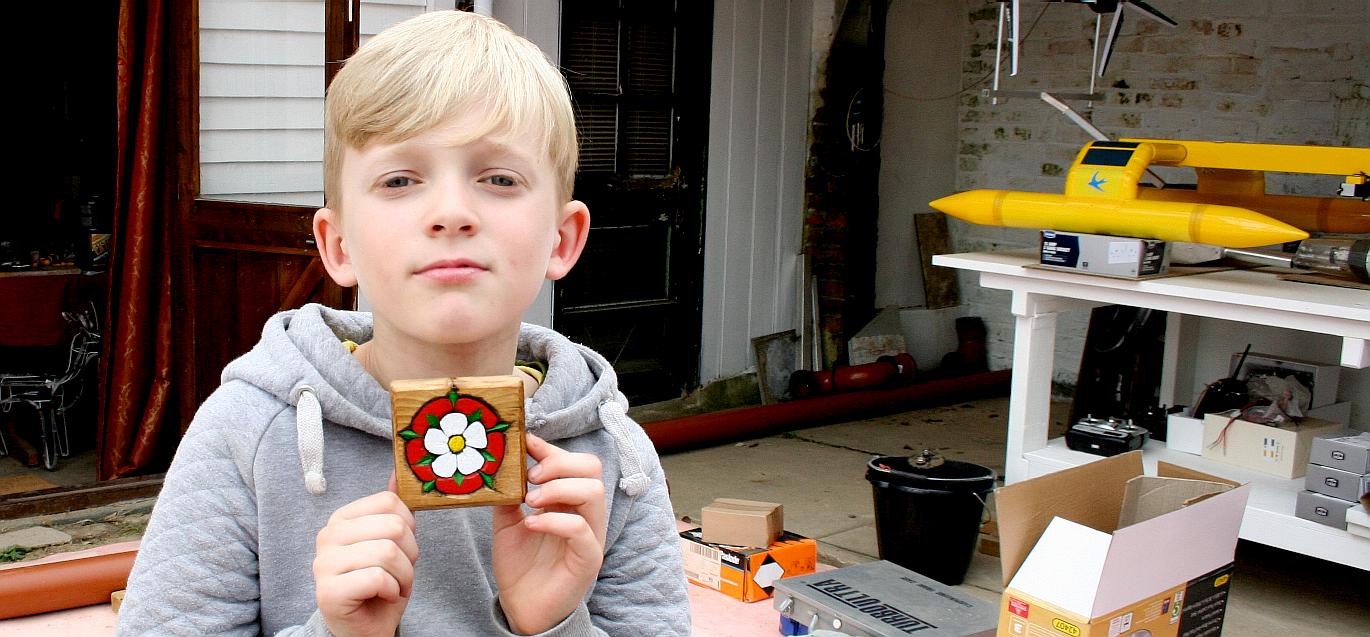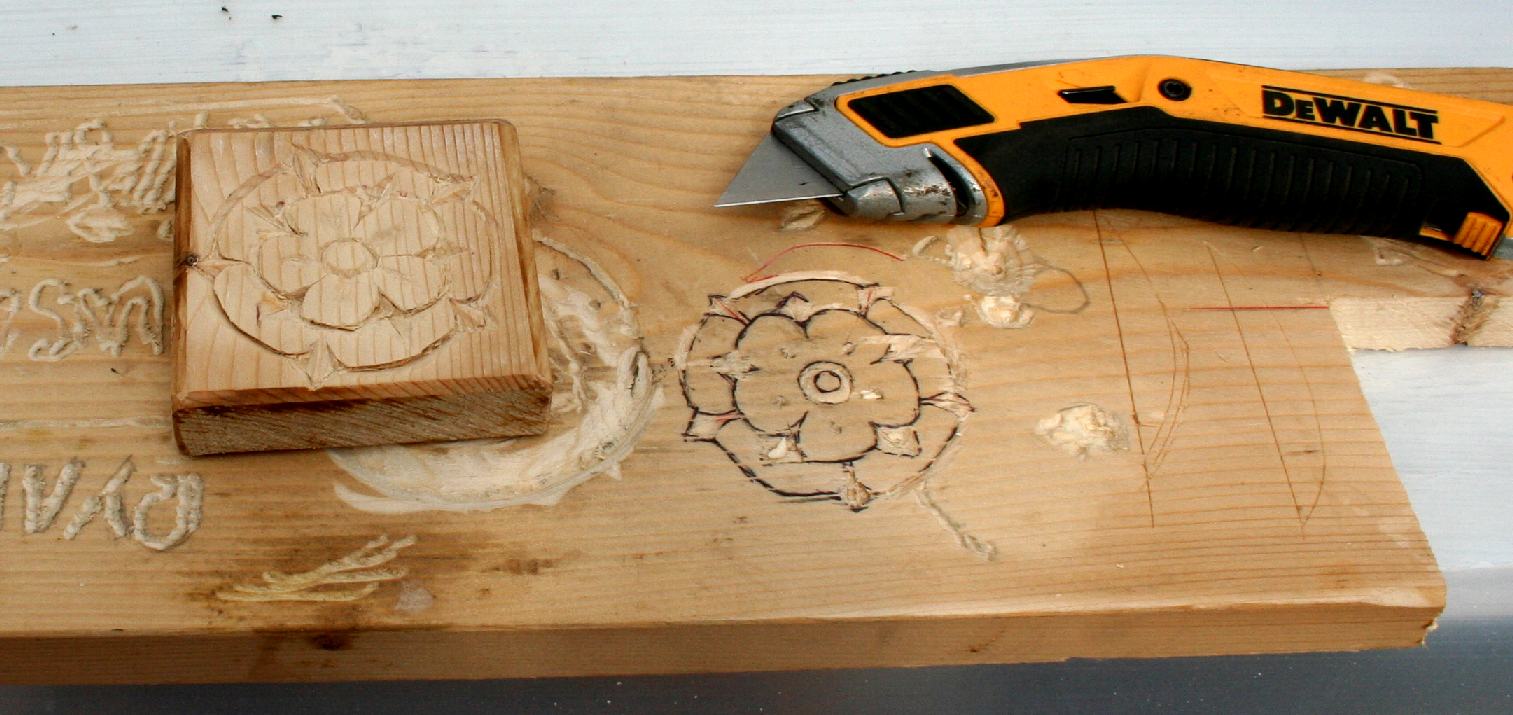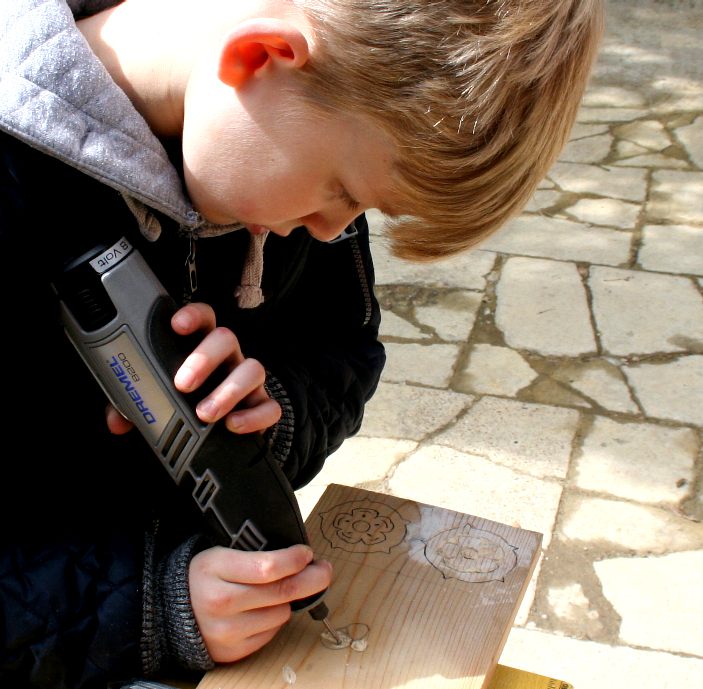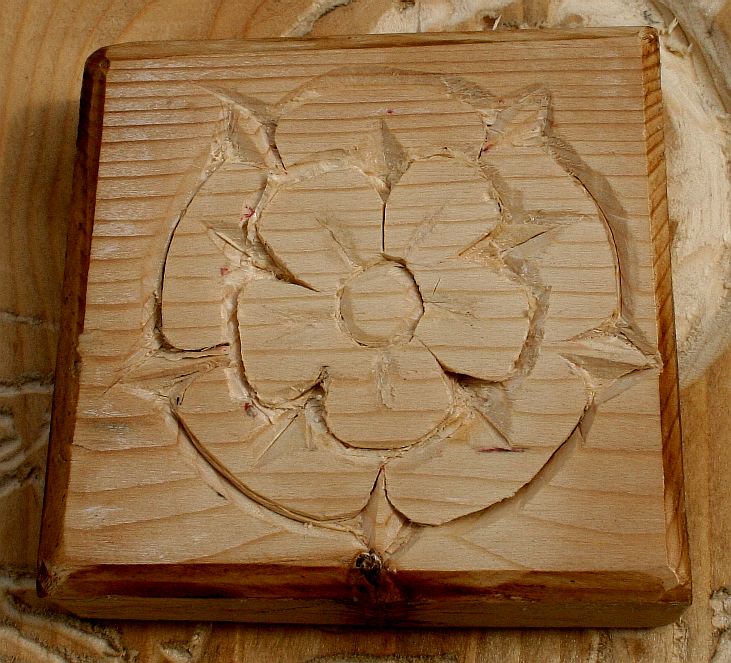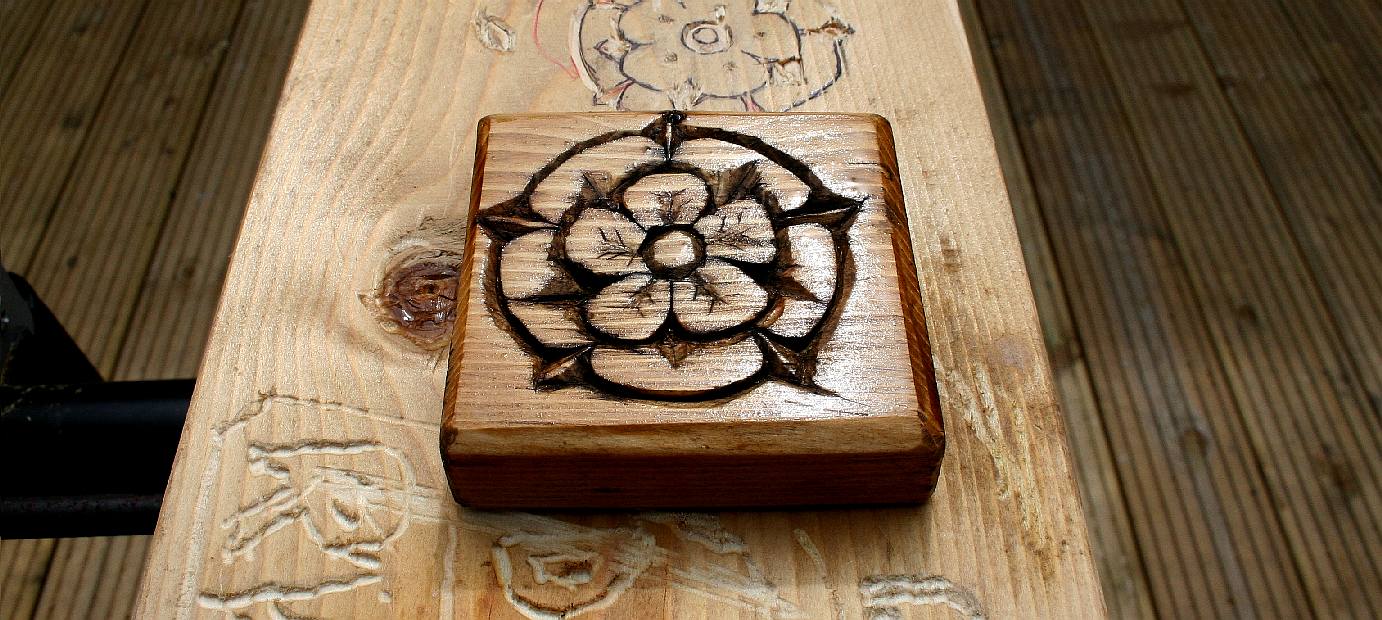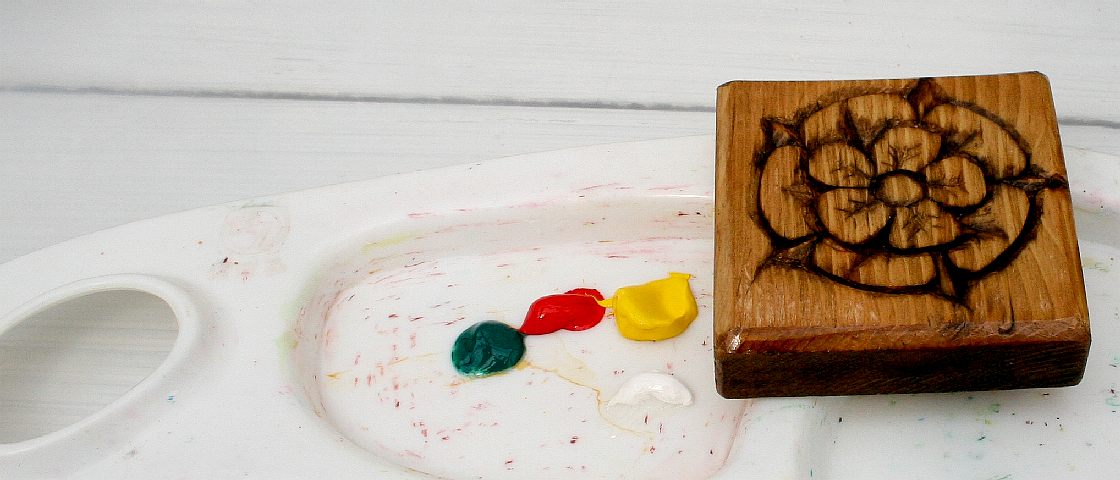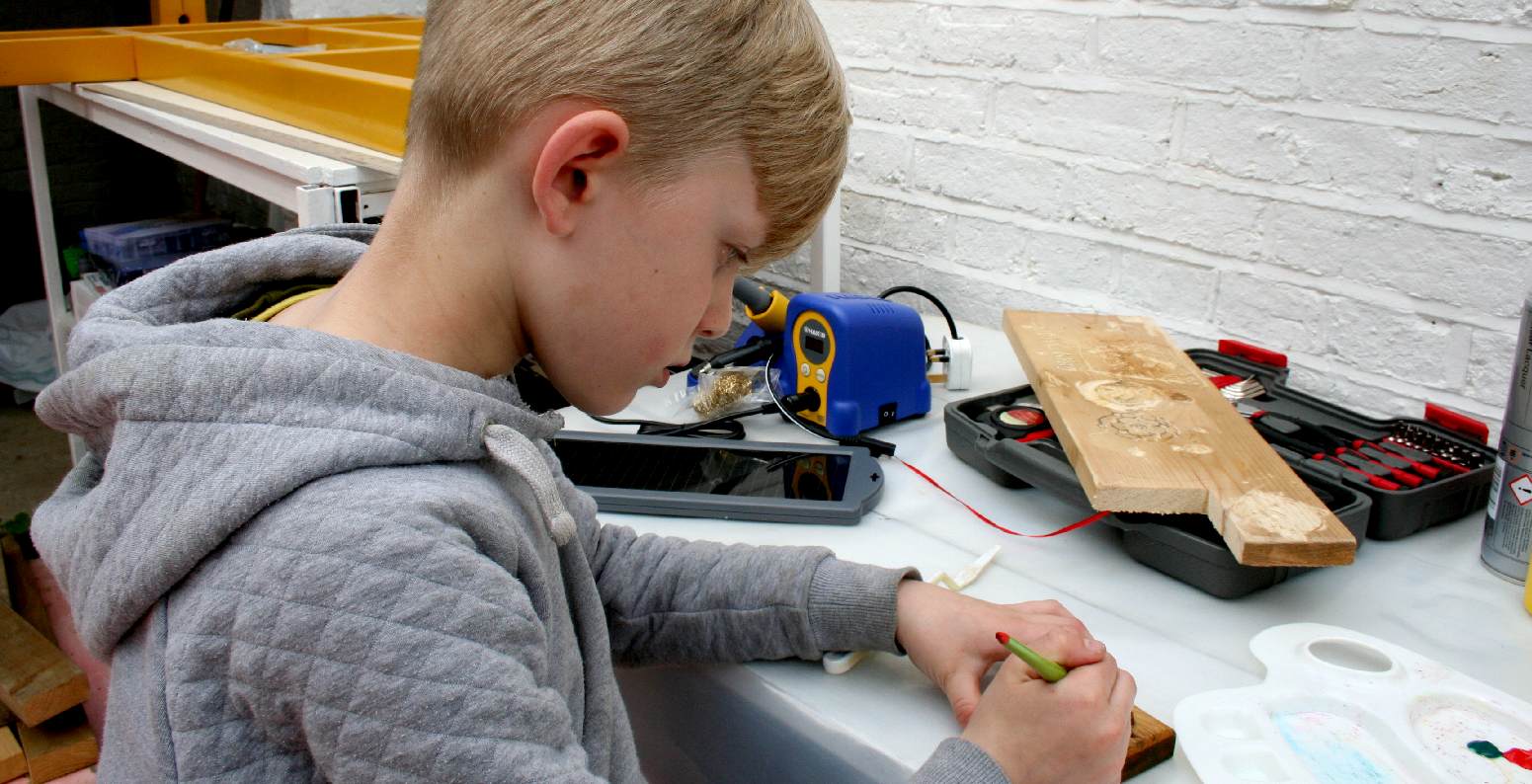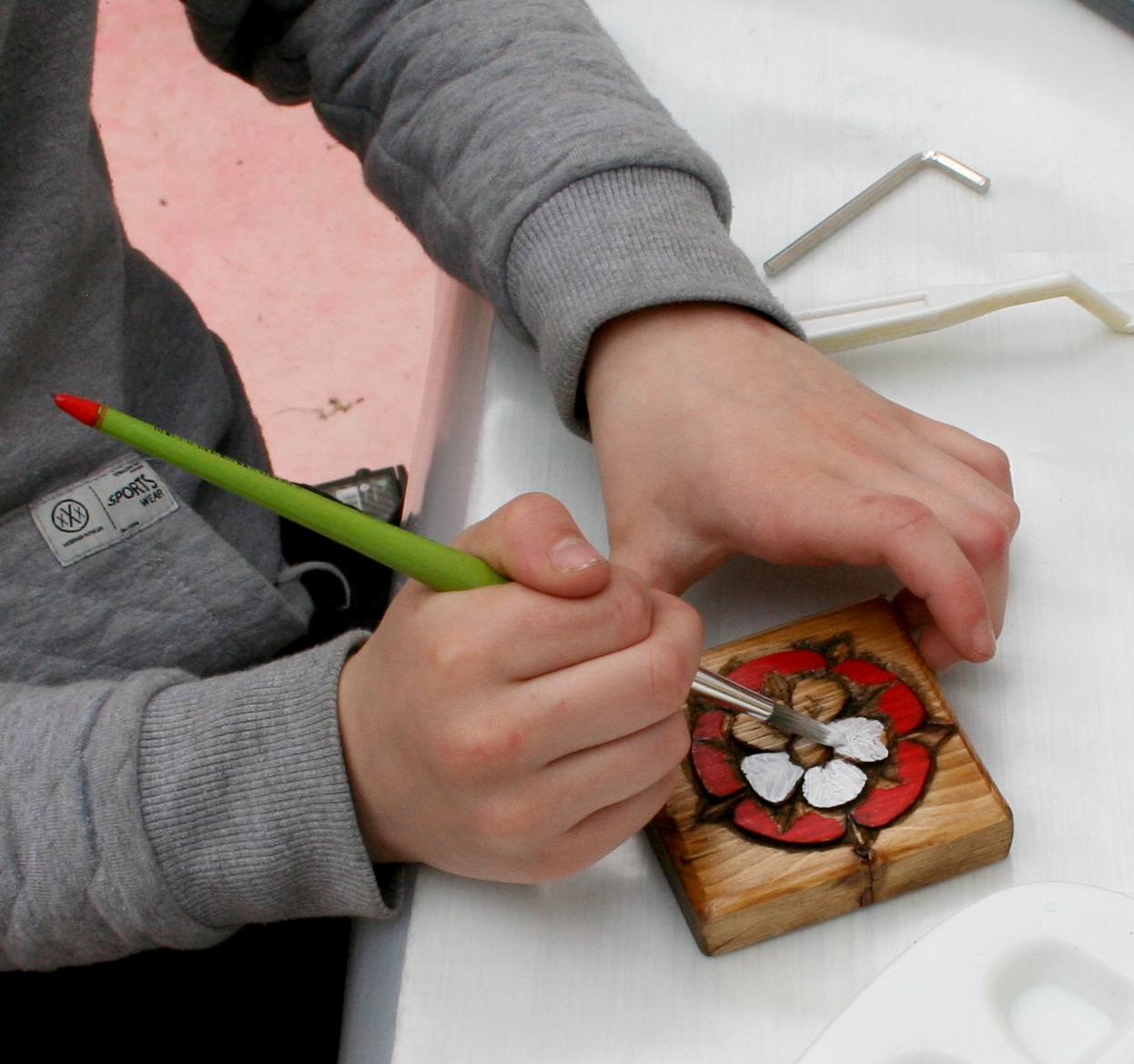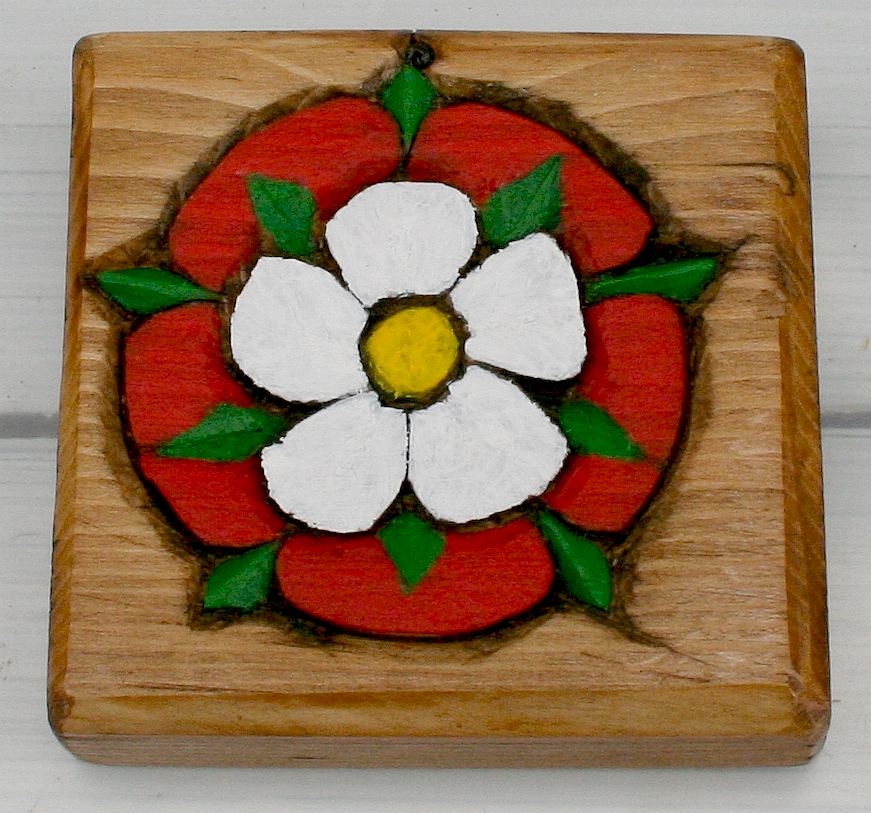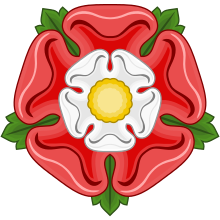|
THE TUDOR ROSE
|
|
RYAN - is proud of his wooden rose. He learned more about wood carving when making it, though he was not allowed to use a Stanley knife, he was allowed to use a Dremel. Copyright © photograph 30 April 2017, all rights reserved. You will need the permission of the Cleaner Oceans Foundation to use this picture.
In year 4 at his junior school in Old Town, Eastbourne, Ryan was assigned the task of producing a Tudor Rose from materials that are found around the home.
WOOD CARVING - A sharp chisel is all that is needed to produce intricate carvings, but a sharp modeling knife is a bonus, except that they are too dangerous for children to use unsupervised or at all.
The crowned and slipped Tudor Rose is used as the plant badge of England, as Scotland uses the thistle, Ireland uses the shamrock, and Wales uses the leek. As such, it is seen on the dress uniforms of the Yeomen Warders at the Tower of London, and of the Yeomen of the Guard. It features in the design of the British Twenty Pence coin minted between 1982 and 2008, and in the royal coat of arms of the United Kingdom. It also features on the coat of arms of Canada. Copyright © photograph 30 April 2017, all rights reserved. You will need the permission of the Cleaner Oceans Foundation to use this picture.
DREMEL 8200 - One way to speed up the carving process is to use power tools. We tried the battery powered Dremel, bit found that it could not cut the sharp angles that we were after. It was a useful tool though and will be used to help Ryan build robots. Copyright © photograph 30 April 2017, all rights reserved. You will need the permission of the Cleaner Oceans Foundation to use this picture.
INVENTION - The "Lancastrian" red rose was an emblem that barely existed before Henry VII. Lancastrian kings used the rose sporadically, but when they did it was often gold rather than red; Henry VI, the king who presided over the country's descent into civil war, preferred his badge of the antelope. Contemporaries certainly did not refer to the traumatic civil conflict of the 15th century as the "Wars of the Roses". For the best part of a quarter-century, from 1461 to 1485, there was only one royal rose, and it was white: the badge of Edward IV. The roses were actually created after the war by Henry VII.. Copyright © photograph 30 April 2017, all rights reserved. You will need the permission of the Cleaner Oceans Foundation to use this picture.
PAINTING KIT - Having carved the rose from a piece of wooden pine plank, it was stained and sealed to give it a bit more character, ready to be painted. A bit over the top perhaps, but Ryan borrowed some artist brushes in the hope of improving the fine detail. Copyright © photograph 30 April 2017, all rights reserved. You will need the permission of the Cleaner Oceans Foundation to use this picture.
ACRYLIC - The choice of paint is important for what you are trying to achieve. Acrylic paint is quick to use and tough, but does not give a high gloss or smooth finish. Fortunately, we were not after a super smooth look - so acrylic paint was perfect. you can mix these basic colours to achieve variations in hue and you simply wash out your brushes under the tap with some soap. Don't wait too long before washing up, or you will not be able to remove the dried paint. Copyright © photograph 30 April 2017, all rights reserved. You will need the permission of the Cleaner Oceans Foundation to use this picture.
CONCENTRATION - It is important to concentrate when painting, using paint brushes. Ryan has his own work table for this kind of operation, a table that he painted himself for other projects. Copyright © photograph 30 April 2017, all rights reserved. You will need the permission of the Cleaner Oceans Foundation to use this picture.
DETAIL - The Tudor Rose is an amalgamation of red and white petals, a yellow centre and green leaves. Copyright © photograph 30 April 2017, all rights reserved. You will need the permission of the Cleaner Oceans Foundation to use this picture.
The Tudor rose (sometimes called the Union rose) is the traditional floral heraldic emblem of England and takes its name and origins from the Tudor dynasty.
When Henry VII took the crown of England from Richard III in battle (1485), he brought the end of the retrospectively-dubbed 'Wars of the Roses' between the House of Lancaster (one monarch of which had sometimes used the badge of a red or gold rose) and the House of York (which had lately used a white-rose badge). Henry's father was Edmund Tudor from the House of Richmond (maternally), and his mother was Margaret Beaufort from the House of Lancaster; in January 1486 he married Elizabeth of York to bring all factions together. (In battle, Richard III fought under the banner of the boar, and Henry under the banner of the dragon of his native Wales.) The white rose versus red rose juxtaposition was Henry's invention.
On his marriage, Henry VII adopted the Tudor rose badge conjoining the White Rose of York and the Red Rose of Lancaster. The Tudor rose is occasionally seen divided in quarters (heraldically as "quartered") and vertically (in heraldic terms per pale) red and white. More often, the Tudor rose is depicted as a double rose, white on red and is always described, heraldically, as "proper".
LINKS & REFERENCE
Royal central red-roses-and-white-a-brief-history-of-the-tudor-rose http://royalcentral.co.uk/historic/red-roses-and-white-a-brief-history-of-the-tudor-rose-55675 https://en.wikipedia.org/wiki/Tudor_rose
|
|
This website is Copyright © 2017. The name Solar Cola is a trade mark of Solar Cola Ltd. All rights reserved. Cleaner Oceans Foundation is an educational charity. |
